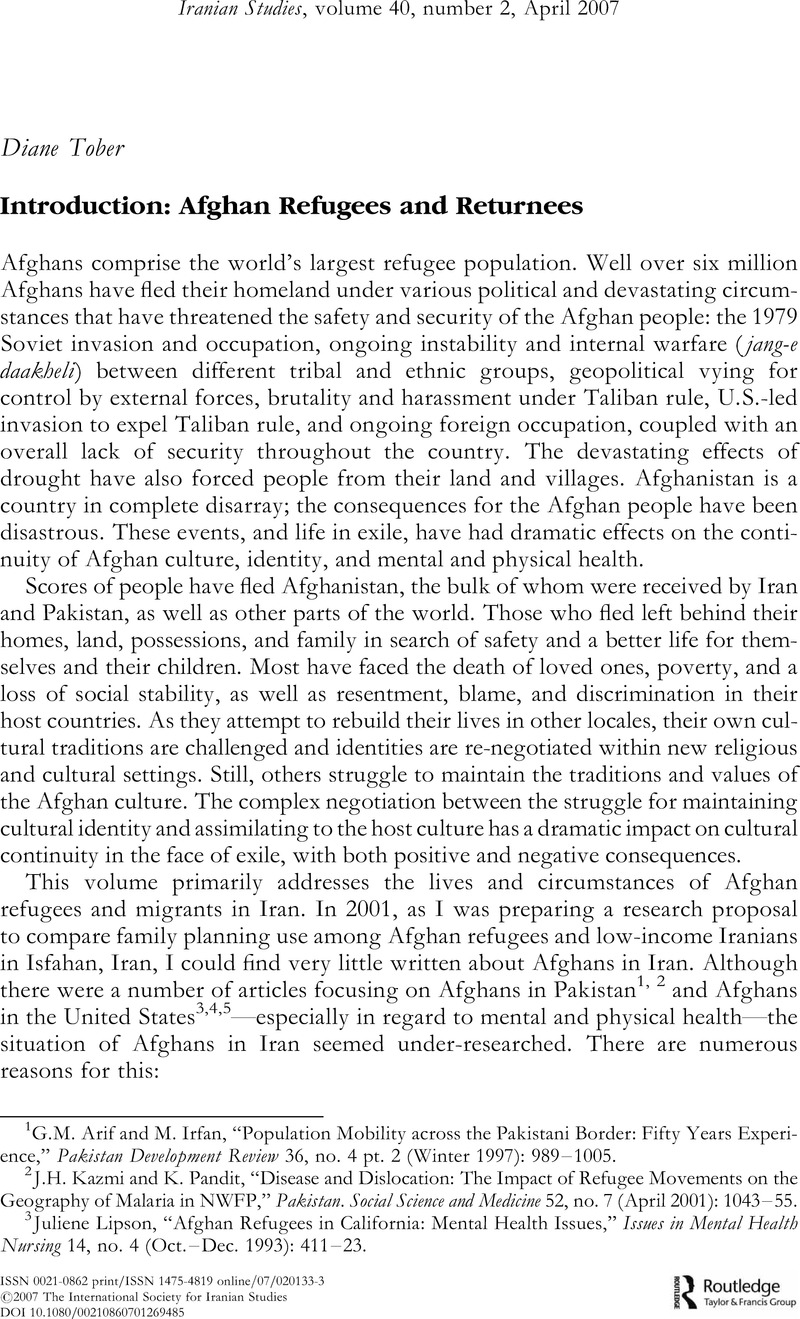Article contents
Introduction: Afghan Refugees and Returnees
Published online by Cambridge University Press: 01 January 2022
Abstract

- Type
- Introduction
- Information
- Copyright
- Copyright © The International Society for Iranian Studies 2007
References
1 Arif, G.M. and Irfan, M., “Population Mobility across the Pakistani Border: Fifty Years Experience,” Pakistan Development Review 36, no. 4 pt. 2 (Winter 1997): 989–1005CrossRefGoogle ScholarPubMed.
2 Kazmi, J.H. and Pandit, K., “Disease and Dislocation: The Impact of Refugee Movements on the Geography of Malaria in NWFP,” Pakistan. Social Science and Medicine 52, no. 7 (April 2001): 1043–55CrossRefGoogle ScholarPubMed.
3 Lipson, Juliene, “Afghan Refugees in California: Mental Health Issues,” Issues in Mental Health Nursing 14, no. 4 (Oct.–Dec. 1993): 411–23CrossRefGoogle ScholarPubMed.
4 Lipson, Juliene and Omidian, Patricia, “Health Issues of Afghan Refugees in California,” Western Journal of Medicine 157, no. 3 (Sept. 1992): 271–5Google ScholarPubMed.
5 Mghir, R. and Raskin, A., “The Psychological Effects of the War in Afghanistan on Young Afghan Refugees from Different Ethnic Backgrounds,” International Journal of Social Psychiatry 45, no. 1 (Spring 1999): 29–36; discussion 36–40CrossRefGoogle Scholar.
- 2
- Cited by


